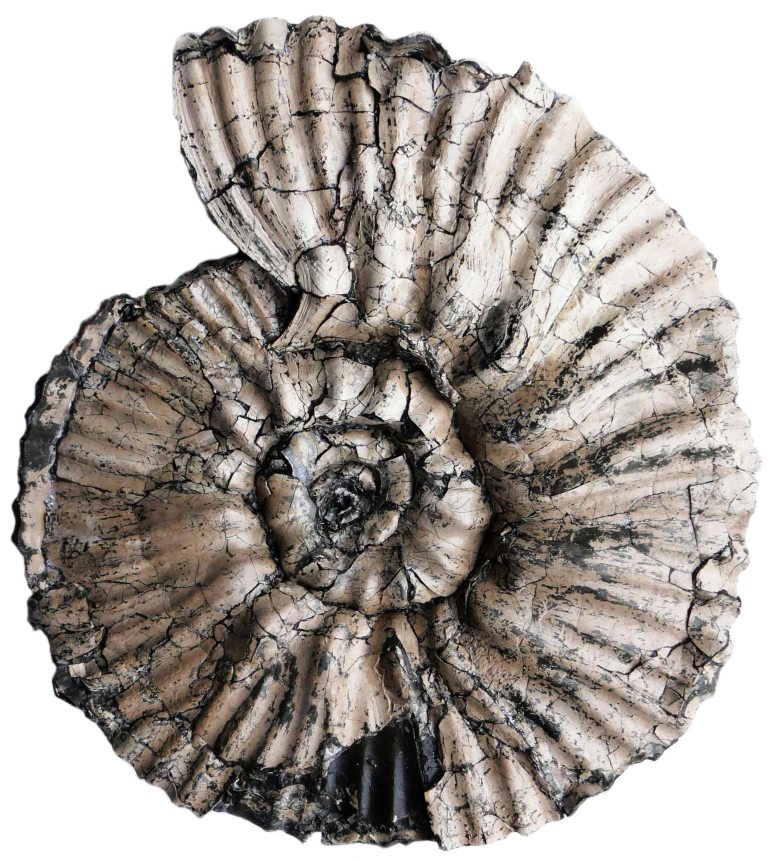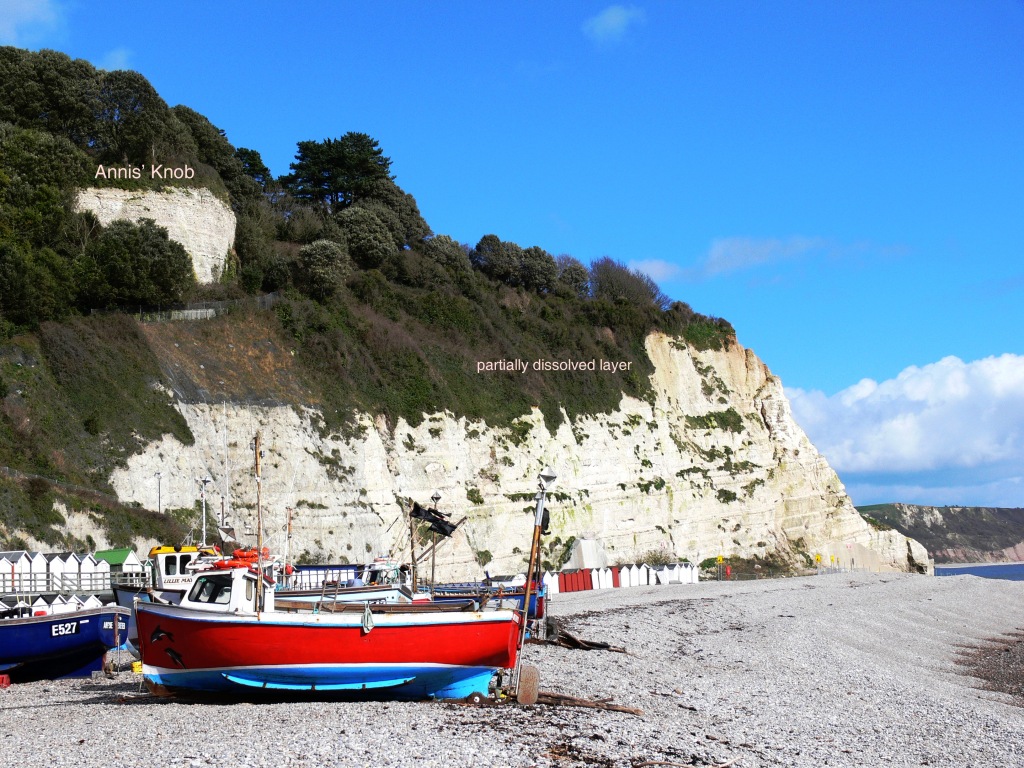C RWG
O


Gravesia cf. gravesiana (d’Orbigny), Kimmeridge Bay, Dorset, Etches Collection.
Most of the geological information required in advance of any new study or investigation that involves rocks or their weathered products comes from an extensive database that extends back over 200 years in the UK. This is in the form of maps, technical and research papers and reports, geophysical data and borehole records. The ammonite Gravesia is one of the many fossils that are used to determine the relative ages of rock successions, some of which are the same age but lithologically markedly different on different continents.
Chalk cliffs at Beer, Devon. Detailed comparisons of the Chalk Group successions exposed in the cliffs at Beer and elsewhere on the Devon and Dorset coasts as part of regional stratigraphical research showed that part of the succession appeared to be up to 50% thinner than had been anticipated. At Beer, the lower part of the Chalk and the large bluff known as Annis’ Knob are separated by a bed of matrix-supported chalk rubble which represents the residue that remained after large-scale partial dissolution in the Tertiary. This bed is much weaker than the underlying and overlying chalks, and has a marked effect on the stability of cliffs. It also provides a clue to the origin of the overlying Clay-with-flints.